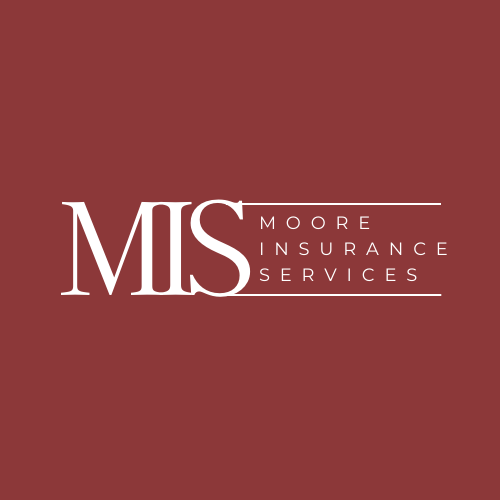Navigating Medicare: Choosing Between a Part D Drug Plan with or without a Deductible
Navigating the world of healthcare can be a daunting task, especially when it comes to Medicare. With so many options to choose from, it can be difficult to determine which plan is right for you. One of the most important decisions you'll need to make is whether to choose a Part D drug plan with or without a deductible. Both options have their pros and cons, and it's important to weigh them carefully before making a decision.
In this post, we'll explore the differences between Part D drug plans with and without a deductible so you can make an informed decision about your healthcare coverage. From understanding how deductibles work to comparing costs and coverage, we've got you covered. So, whether you're new to Medicare or simply looking to switch plans, read on to learn more about choosing the right Part D drug plan for your needs.
Understanding the Basics of Medicare Part D Drug Plans
Before delving into the decision-making process of choosing between a Part D Drug Plan with or without a deductible, it is essential to have a solid understanding of the basics of Medicare Part D drug plans. Medicare Part D is a prescription drug coverage program offered by private insurance companies approved by Medicare. It provides crucial financial assistance to Medicare beneficiaries in covering the costs of prescription drugs.
Medicare Part D drug plans can be obtained as standalone plans, known as Prescription Drug Plans (PDPs), or as part of a Medicare Advantage plan (Part C). These plans are designed to help individuals with Medicare afford their necessary medications and ensure access to a wide range of prescription drugs.
It is important to note that Original Medicare (Part A and Part B) does not cover most prescription drugs, except for a few specific medications such as those administered during inpatient hospital stays or certain cancer treatments. To fill this coverage gap, Medicare beneficiaries have the option to enroll in a Part D drug plan.
Part D drug plans typically have a monthly premium that must be paid by the beneficiary. In addition to this premium, other costs associated with the plan include an annual deductible, copayments or coinsurance for each prescription, and a coverage gap, also known as the "donut hole," which temporarily limits coverage after a certain threshold of drug spending.
Understanding the coverage phases of a Part D drug plan is crucial in evaluating the overall value it provides. These phases include the deductible phase, initial coverage phase, coverage gap phase, and catastrophic coverage phase. Each phase has its own set of cost-sharing requirements and limitations, which can vary between plans.
What is a Medicare Part D Deductible?
Understanding the concept of a Medicare Part D deductible is essential when it comes to making informed decisions about your healthcare coverage. A Medicare Part D drug plan is designed to provide prescription drug coverage to individuals enrolled in Medicare. However, not all Part D plans are created equal, and one key factor to consider is whether or not the plan includes a deductible.
In simple terms, a deductible is the amount of money that you must pay out-of-pocket before your insurance coverage kicks in. When it comes to Medicare Part D, this means that if you have a plan with a deductible, you will be responsible for paying the full cost of your prescription drugs until you reach the deductible amount specified by your plan. Once the deductible is met, your insurance coverage will then begin to cover a portion of the costs, and you will only be responsible for paying the specified copayment or coinsurance for your medications.
On the other hand, if you opt for a Medicare Part D plan without a deductible, you will not have to meet a specific out-of-pocket threshold before your coverage starts. Instead, your insurance will begin to cover a percentage of the drug costs from the very first prescription, provided that it is covered by your plan's formulary.
Choosing between a Part D drug plan with or without a deductible depends on your individual healthcare needs and budget. If you take regular medications and anticipate higher prescription costs throughout the year, a plan with a deductible may result in lower monthly premiums. However, if you have a more limited number of prescriptions or prefer the peace of mind of immediate coverage, a plan without a deductible might be a better option.
Pros and Cons of Part D Drug Plans with a Deductible
When it comes to choosing a Part D Drug Plan for Medicare, one important factor to consider is whether or not you want a plan with a deductible. While each option has its own advantages and disadvantages, it ultimately depends on your individual needs and financial situation. Let's take a closer look at the pros and cons of Part D Drug Plans with a deductible.
Pros:
- Lower Monthly Premiums: Part D Drug Plans with deductibles often have lower monthly premiums compared to plans without deductibles. This can be beneficial if you're looking to save on your monthly healthcare expenses.
- More Comprehensive Coverage: Plans with a deductible typically offer more comprehensive coverage once the deductible is met. This means that after reaching the deductible amount, you may have access to a wider range of medications at a lower cost.
- Potential Cost Savings: If you don't require frequent or expensive medications, choosing a plan with a deductible can potentially save you money in the long run. You'll only need to pay the deductible amount before reaching the coverage phase where your out-of-pocket costs are reduced.
Cons:
- Upfront Costs: The main drawback of selecting a Part D Drug Plan with a deductible is the initial out-of-pocket expense. You'll need to meet the deductible amount before your plan starts covering your medications. This can be a significant financial burden, especially if you rely on costly prescription drugs.
- Limited Coverage during the Deductible Phase: Until you meet the deductible, you may have to pay the full cost of your medications, which can be particularly challenging if you have multiple prescriptions or require expensive drugs. This could potentially lead to higher out-of-pocket costs during the initial phase of the plan.
- Not Suitable for Everyone: Choosing a Part D Drug Plan with a deductible may not be the best option for everyone. If you have chronic health conditions that require regular medication, it might be more beneficial to opt for a plan without a deductible to ensure continuous coverage without significant upfront costs.
- Ultimately, the decision between a Part D Drug Plan with or without a deductible depends on your specific healthcare needs and financial circumstances. Consider factors such as your medication requirements, budget, and potential cost savings before making a final decision. It's essential to review different plan options and seek guidance from a Medicare specialist to make an informed choice that aligns with your healthcare goals.
Pros and Cons of Part D Drug Plans without a Deductible
Part D Drug Plans without a deductible can be an appealing option for Medicare beneficiaries who require prescription medications on a regular basis. These plans typically offer immediate coverage for prescription drugs without the need to meet a deductible threshold first. Let's explore the pros and cons of such plans to help you make an informed decision.
Pros:
- Immediate Coverage: One of the significant advantages of Part D Drug Plans without a deductible is that you can start receiving coverage for your prescription medications right away. This can be beneficial if you have ongoing medical needs and rely on regular prescriptions to maintain your health.
- Cost Predictability: Without a deductible, you will know exactly how much you need to pay for your medications each month. This can make it easier to budget and plan for your healthcare expenses, especially if you have a fixed income.
- Prescription Access: With a Part D Drug Plan without a deductible, you can access your needed medications without delay. This can be crucial for individuals with chronic conditions who cannot afford to wait for their prescriptions to be covered after meeting a deductible.
Cons:
- Potentially Higher Premiums: Part D Drug Plans without a deductible often have higher monthly premiums compared to plans with a deductible. This means you may have to pay more each month to maintain this level of immediate coverage.
- Limited Generic Options: Some Part D Drug Plans without a deductible may have stricter formularies or preferred brand-name medications, limiting your options for generic alternatives. This could result in higher out-of-pocket costs for specific medications.
- Less Flexibility: While immediate coverage is advantageous, plans without a deductible may have more restrictions on the types of medications covered or the pharmacies you can use. It's essential to review the plan's network and formulary to ensure your preferred medications and pharmacies are included.
When deciding between a Part D Drug Plan with or without a deductible, consider your specific healthcare needs, budget, and prescription requirements. Take into account factors such as your medication costs, frequency of usage, and preferred pharmacies to determine which plan aligns best with your unique circumstances.
How to Determine if a Part D Deductible is Worth it for You
When it comes to choosing a Part D drug plan under Medicare, one of the key decisions you'll need to make is whether to opt for a plan with or without a deductible. This choice can have a significant impact on your out-of-pocket costs and overall savings, so it's crucial to carefully evaluate your unique healthcare needs before making a decision.
To determine if a Part D deductible is worth it for you, consider the following factors:
1. Medication Usage: Take a closer look at the prescription drugs you require on a regular basis. If you have multiple prescriptions or rely on expensive medications, a Part D plan with a deductible might be beneficial. The deductible amount can be spread across the year, potentially leading to lower co-payments for your medications in the long run.
2. Budget: Evaluate your financial situation and assess your ability to cover the initial deductible cost. If you have a limited budget, a Part D plan with a deductible may require you to pay more out-of-pocket upfront before reaching the coverage stage. In such cases, a plan without a deductible might be a more suitable option.
3. Health Predictability: Consider the stability of your health conditions and the predictability of your prescription drug needs. If you have a chronic condition or require medications consistently throughout the year, a plan with a deductible could offer cost savings over time. On the other hand, if your health needs are relatively stable or you only need medications sporadically, a plan without a deductible may be more cost-effective.
4. Plan Comparison: Compare different Part D plans available in your area, considering both the deductible and the overall cost structure. Look closely at the monthly premiums, co-pays, and coverage limits of each plan to determine which option aligns best with your medication needs and financial circumstances.
Tips for Navigating the Medicare Part D Plan Decision
Choosing the right Medicare Part D plan can feel like navigating a maze of options and confusing terms. With so many plans available, it's important to take the time to evaluate your needs and make an informed decision. Here are some tips to help you navigate the Medicare Part D plan decision and find the best fit for your prescription drug coverage.
1. Review your current medications: Start by making a list of all the prescription medications you currently take. Note the dosages and how often you refill each prescription. This will give you a clear picture of your medication needs and help you identify any specific coverage requirements.
2. Compare plan formularies: Each Medicare Part D plan has a formulary, which is a list of covered medications. Look closely at the formularies of the plans you are considering to ensure that your medications are included. Pay attention to any restrictions or limitations, such as prior authorization or step therapy requirements.
3. Evaluate costs: Compare the monthly premiums, deductibles, and copayments for each plan. Consider how often you refill your prescriptions and calculate the annual costs for each plan based on your specific medication needs. Don't forget to factor in any discounts or assistance programs that may be available.
4. Consider the coverage gap: Medicare Part D plans have a coverage gap, often referred to as the "donut hole." This is a temporary limit on what the plan will cover for prescription drugs. Take a close look at how each plan handles this coverage gap and assess the potential impact on your out-of-pocket expenses.
5. Seek assistance if needed: If you find the process overwhelming or have difficulty understanding the different plan options, don't hesitate to seek assistance. Medicare.gov offers resources to help you compare plans, and there are also trained counselors available through State Health Insurance Assistance Programs (SHIPs) who can provide personalized guidance. Our office also offers a yearly review for our clients that compares all available plans and helps you make the most informed decision.
Remember, Medicare Part D is designed to provide affordable access to prescription medications, so taking the time to explore and understand your options can lead to substantial savings and better overall healthcare management.
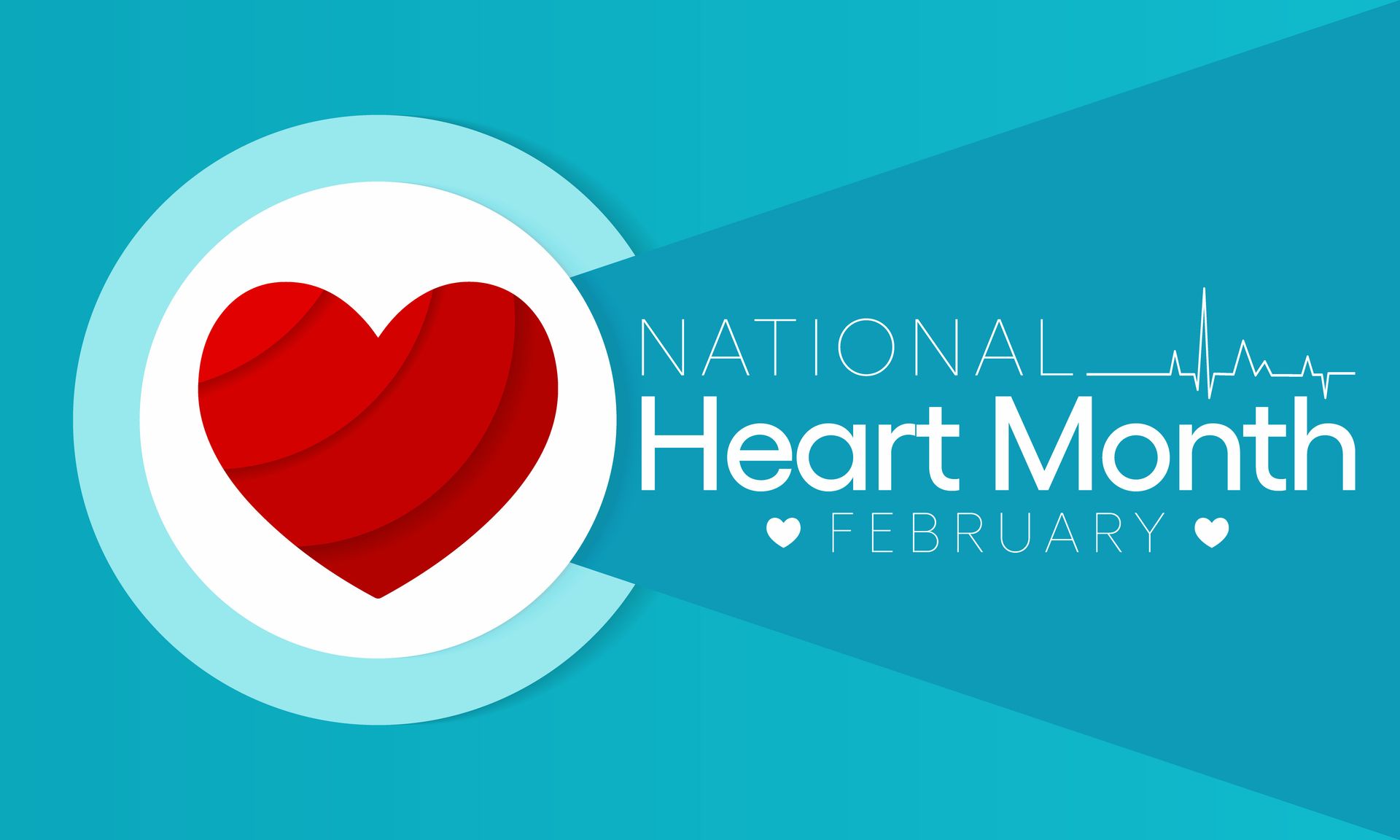
In a world where the hustle and bustle of daily life often overshadows our well-being, it’s crucial to prioritize one of our most vital organs: the heart. With heart disease remaining a leading cause of health complications globally, understanding how to nurture and protect this essential organ is more important than ever. Fortunately, keeping your heart healthy doesn’t have to be an overwhelming task. These simple tips will make all the difference in your heart health. Eat a Heart-Healthy Diet Eating a heart-healthy diet is one of the most impactful steps you can take to safeguard your cardiovascular health. Imagine your plate filled with vibrant colors—deep greens, rich reds, sunny yellows—all representing a variety of nutrient-dense foods that work together to support your heart. A heart-healthy diet emphasizes whole foods that are low in saturated fats, cholesterol, and sodium while being high in fiber and essential nutrients. Stay Physically Active Staying physically active is one of the most crucial components of maintaining a healthy heart. Regular exercise not only strengthens the heart muscle but also improves circulation, lowers blood pressure, and helps manage weight—all vital factors in heart health. Engaging in physical activity doesn’t have to be a chore; in fact, it can be an enjoyable part of your daily routine. Maintain a Healthy Weight Maintaining a healthy weight is a cornerstone of heart health and plays a significant role in reducing the risk of heart disease. Carrying excess weight, particularly around your midsection, can put additional strain on your heart and elevate blood pressure, cholesterol levels, and blood sugar. Therefore, achieving and maintaining a healthy weight is not just about aesthetics; it’s about promoting overall well-being and longevity. Manage Stress Effectively Managing stress effectively is crucial for maintaining a healthy heart. In today’s fast-paced world, stress can seem inevitable, but how you respond to it can make all the difference. Chronic stress triggers a cascade of physiological responses in the body, including increased heart rate and elevated blood pressure, both of which can strain your cardiovascular system over time. Quit Smoking and Avoid Tobacco Quitting smoking and avoiding tobacco products is one of the most significant steps you can take in your journey towards a healthier heart. The dangers of tobacco use are well-documented, and the statistics are sobering. Smokers are twice as likely to suffer from heart disease compared to non-smokers, and the harmful chemicals found in cigarettes can damage blood vessels, reduce oxygen flow, and increase blood pressure—all of which contribute to cardiovascular problems. Importance of Sleep for Heart Health To promote heart health, aim for 7 to 9 hours of quality sleep each night. Create a peaceful sleep environment by keeping your bedroom cool, dark, and free from distractions like electronic devices. Consider incorporating relaxation techniques such as deep breathing or gentle stretching before bedtime to help ease your mind. Prioritizing heart health is a lifelong commitment that can lead to a happier, more vibrant life. By incorporating simple tips into your daily routine—ranging from balanced nutrition and regular exercise to managing stress and getting enough sleep—you can significantly reduce your risk of heart disease and enhance your overall well-being. Remember, small, consistent changes can make a big difference over time.

The 2025 cap on Part D prescription costs marks a significant shift in the landscape of Medicare coverage, aiming to provide much-needed relief to beneficiaries grappling with escalating medication expenses. Under this new policy, the out-of-pocket costs for prescription drugs will be limited to $2,000 annually. This means that once you reach this threshold, your prescription costs for the remainder of the year will be significantly reduced, offering a vital safety net for those who may have previously faced exorbitant bills. The cap encompasses all covered medications, ensuring that individuals on multiple prescriptions can benefit from this cost-control measure. This change is particularly important for seniors and individuals with chronic conditions who often rely on a regimen of medications to manage their health. In addition to the cap, the 2025 reforms also include provisions for improved access to lower-cost generic drugs and an expanded list of preventive services that are provided at no cost to beneficiaries. This not only emphasizes the importance of proactive health management but also aims to reduce the financial barriers that often prevent individuals from seeking necessary treatments. As we move towards 2025, it’s essential to understand how this cap will impact your healthcare budget and the overall sustainability of your prescription drug needs. By keeping abreast of these changes, you can better plan for your health expenses and make informed decisions about your medication options. The implementation of this cap represents a pivotal moment in healthcare policy, providing a clearer pathway for millions of Americans to access the medications they need without the looming threat of financial hardship. For the average Medicare beneficiary, this cap means a newfound sense of security. Those who rely on multiple prescriptions to manage chronic conditions often face overwhelming costs, especially if they fall into the "donut hole," where out-of-pocket expenses spike. With the cap in place, beneficiaries can confidently plan their budgets, knowing they will not exceed the $2,000 threshold. However, the cap also introduces some complexities that require attention. While the financial burden is eased, beneficiaries will need to be proactive in managing their prescriptions. It’s essential to stay informed about which medications are covered under Part D plans and how costs are structured throughout the year. Additionally, the cap encourages beneficiaries to engage with their healthcare providers and pharmacists to explore lower-cost alternatives or generics, potentially maximizing their savings even further. Moreover, the cap's implementation may lead to changes in plan offerings and pharmaceutical pricing strategies. Beneficiaries should keep an eye on how their current plans adapt to this new structure and be prepared to shop around during open enrollment periods to ensure they secure the best coverage for their needs. As we look ahead to 2025 and the implementation of the cap on Part D prescription costs, it’s clear that this change represents a significant shift in the landscape of healthcare affordability for many Americans. The anticipated cap aims to alleviate the financial burden on seniors and individuals with disabilities who have historically faced high out-of-pocket expenses for essential medications. Navigating this new terrain will require a proactive approach. It's crucial to stay informed about the specific details of the cap, including how it interacts with various plans, formulary changes, and potential cost variations. Understanding your options will empower you to make informed decisions about your healthcare needs. Moreover, it’s essential to engage with your healthcare providers and pharmacists, who can offer guidance tailored to your unique situation. They can help you navigate the complexities of your prescription coverage and suggest alternative medications or assistance programs if necessary. As we prepare for this transformative change, consider taking the time to review your current prescription plan and assess your medication needs. By doing so, you can ensure that you are not only ready for the upcoming cap but also positioned to maximize the benefits it offers. As always, if you have questions about your prescription drug coverage, or any of your other health coverages, we are always here to answer any questions.

As technology advances and the digital landscape evolves, so do the tactics used by scammers targeting vulnerable populations, particularly seniors. With their wealth of life experience and often hard-earned savings, older adults can become prime targets for deceitful schemes designed to exploit their trust and financial security. In a world where phone calls, emails, and online messages can easily disguise malicious intent, it’s crucial for seniors to arm themselves with knowledge and strategies to identify and thwart these threats. Understanding Common Scams Targeting Seniors Understanding common scams targeting seniors is the first line of defense in protecting yourself from financial fraud. Scammers often exploit the vulnerabilities and trust of older adults, using tactics that can seem benign at first glance. It’s crucial to be aware of the most prevalent types of scams so that you can recognize them and take action before falling victim. One of the most insidious scams is the "phishing" email, where fraudsters pose as credible organizations—like banks or government agencies—asking for personal information or urging recipients to click on a malicious link. These emails may look official, complete with logos and professional language, making it easy to mistake them for legitimate communications. Another common scam is the lottery or prize scam, where seniors are informed they’ve won a contest they never entered. The catch? They need to pay a fee or provide sensitive information to claim their prize. This tactic preys on the excitement of potential winnings, often leading victims to part with their money before realizing it’s a hoax. Romance scams have also become alarmingly prevalent, leveraging online dating platforms to build emotional connections with seniors. Scammers often create fake profiles, gaining trust over time before requesting money for emergencies or travel expenses, leaving victims heartbroken and financially devastated. Finally, there are scams that involve home repairs and services. Fraudsters may offer unsolicited services at exaggerated prices, often pressuring seniors into immediate payments for work that may never be completed or is poorly executed. Recognizing Red Flags: Warning Signs of Fraud In today’s increasingly digital world, scammers are becoming more sophisticated, employing tactics that can easily deceive even the most cautious individuals. For seniors, recognizing red flags is crucial in the fight against fraud. Here are some key warning signs to watch out for: **Unsolicited Contact:** Be wary of unexpected phone calls, emails, or messages from unfamiliar sources. Scammers often initiate contact, claiming to represent legitimate organizations or government agencies. If something feels off, trust your instincts and do not engage. **Too Good to Be True Offers:** If you receive an offer that seems too good to be true, it probably is. Whether it’s a promise of large sums of money for little effort, or incredible deals on products and services, these enticing pitches are often designed to lure you into a scam. **Pressure to Act Quickly:** Scammers often create a false sense of urgency to pressure their victims into making hasty decisions. Phrases like "limited time offer" or "act now to avoid consequences" are common tactics. Take a step back to assess the situation before responding. **Requests for Personal Information:** Legitimate organizations will never ask for sensitive information, such as Social Security numbers, bank account details, or passwords, via email or over the phone. If someone insists on this information, it’s a major red flag. **Unusual Payment Methods:** Be cautious if someone requests payment through wire transfers, gift cards, or cryptocurrency. These methods are often preferred by scammers because they are difficult to trace and recover. **Lack of Verifiable Information:** Scammers often provide vague details or refuse to give you their business name, phone number, or website. Always do your research and verify any claims before proceeding. **Emotional Manipulation:** Many scams exploit emotions, playing on feelings of fear, love, or greed. If someone is attempting to manipulate your emotions to get you to comply, take a step back and evaluate the situation logically. How to Respond if You Suspect a Scam If you find yourself in a situation where you suspect a scam, it's crucial to act swiftly and decisively. The first step is to trust your instincts; if something feels off, it probably is. Take a moment to gather your thoughts and assess the situation. Document any relevant details, such as the caller's name, the company they claim to represent, and the nature of the communication. Keeping a record can be invaluable if you need to report the incident later. Once you’ve assessed the situation, it’s time to take action. If the scam comes in the form of a phone call, hang up. Do not engage or provide any personal information. If it’s an email or text message, don’t click on any links or download attachments. Instead, consider reaching out to a trusted friend or family member for advice. They can provide support and help you evaluate the situation from a fresh perspective. Reporting the scam is another critical step. Contact your local consumer protection agency, the Federal Trade Commission (FTC), or your country’s equivalent organization to file a complaint. Providing them with as much information as possible helps them track scams and warn others in the community. Additionally, if you think you may have inadvertently shared personal information, contact your bank or credit card company immediately to alert them and take necessary precautions. They can help monitor your accounts for any suspicious activity and guide you on the next steps to secure your finances. Lastly, consider sharing your experience with others, whether through local community groups, social media, or family gatherings. Raising awareness about scams can empower others to protect themselves and create a network of vigilance within your community. Remember, staying informed and proactive is your best defense against scammers. Ultimately, taking control of one’s finances is about empowerment. By arming themselves with knowledge, utilizing available resources, and fostering a community of support, seniors can confidently navigate the financial landscape and outsmart scammers. Let this guide serve as a stepping stone to a more secure financial future, where seniors can enjoy their hard-earned savings without the shadow of fraud looming over them. Remember, awareness is the best defense, and every step taken towards financial literacy is a step towards peace of mind.
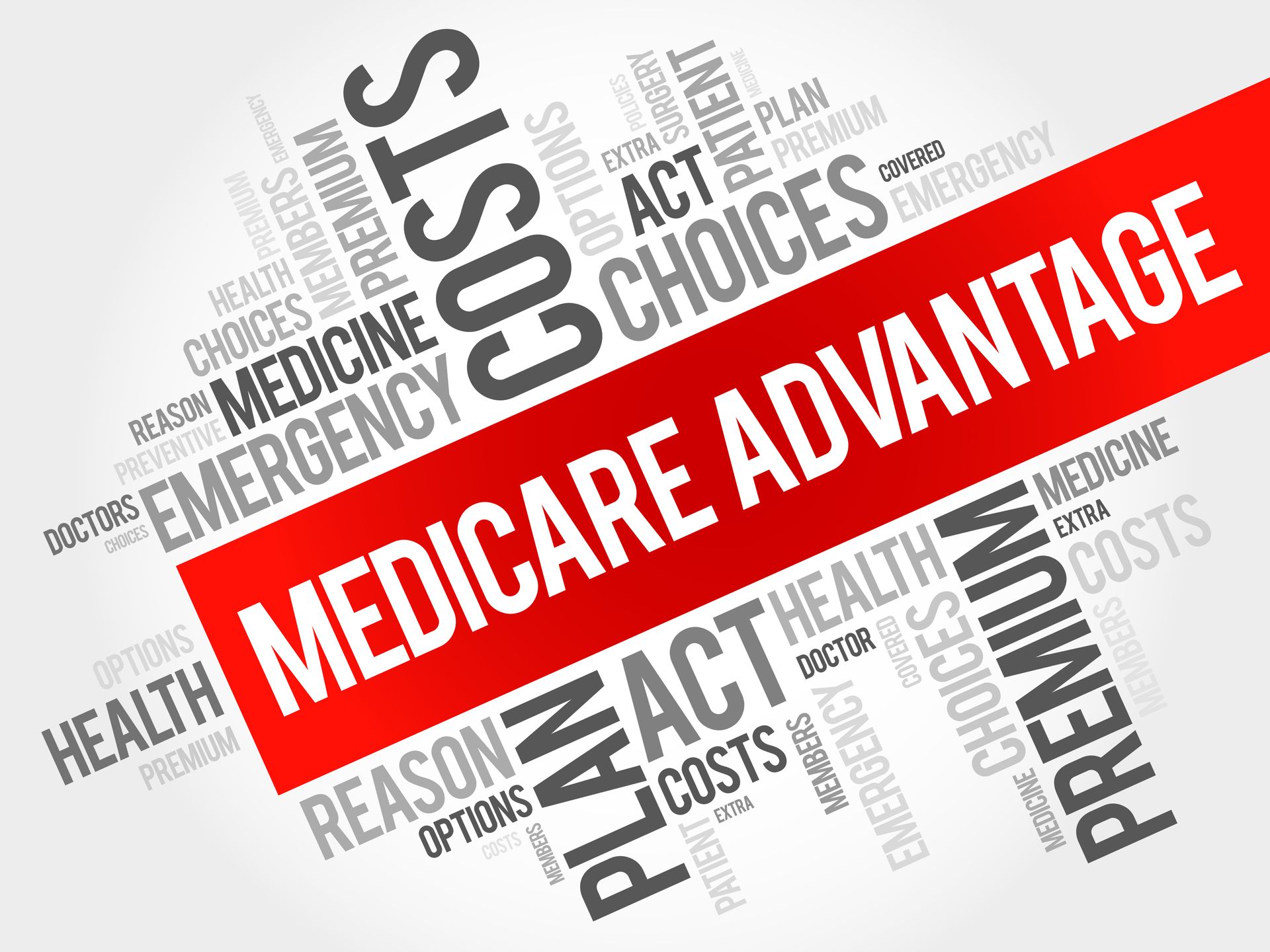
Medicare Advantage plans, also known as Medicare Part C, are offered by private insurance companies and provide an alternative to traditional Medicare. They are designed to offer more comprehensive coverage and benefits than traditional Medicare, but they also come with some additional costs and restrictions. Here are some factors to consider when deciding if a Medicare Advantage plan is right for you: 1. Your Health Care Needs: Medicare Advantage plans typically offer more comprehensive coverage than traditional Medicare, including coverage for things like dental, vision, hearing, and prescription drugs. If you have a lot of healthcare needs, a Medicare Advantage plan may be a good option for you. 2 . Your Budget: Medicare Advantage plans typically have higher premiums than traditional Medicare, but they may also offer lower out-of-pocket costs, such as deductibles, copayments, and coinsurance. You will need to compare the costs of different plans to see which one is right for you. 3 . Your Provider Network: M edicare Advantage plans typically have their own provider networks. If you have a doctor or specialist that you see regularly, you will need to make sure that they are in the plan's network. Otherwise, you may have to pay out-of-network fees. 4. Your Medication Needs: Medicare Advantage plans may have different formularies, which are the lists of covered drugs. If you take a lot of medications, you will need to make sure that your drugs are covered by the plan. Otherwise, you may have to pay higher costs for your medications. 5. Your Lifestyle and Preferences: Some Medicare Advantage plans offer additional benefits and features, such as gym memberships, transportation services, and telehealth visits. If these benefits are important to you, you may want to consider a Medicare Advantage plan that offers them. 6. Your Future Health Care Plans: If you think you may need long-term care in the future, you may want to consider a Medicare Advantage plan that offers long-term care coverage. This type of coverage can help you pay for nursing home care, assisted living, or other long-term care services. If you are considering a Medicare Advantage plan, you should talk to your doctor, a Medicare insurance agent, and your family to get more information and to help you choose the plan that is right for you. If you have questions or would like to explore your options, give us a call !
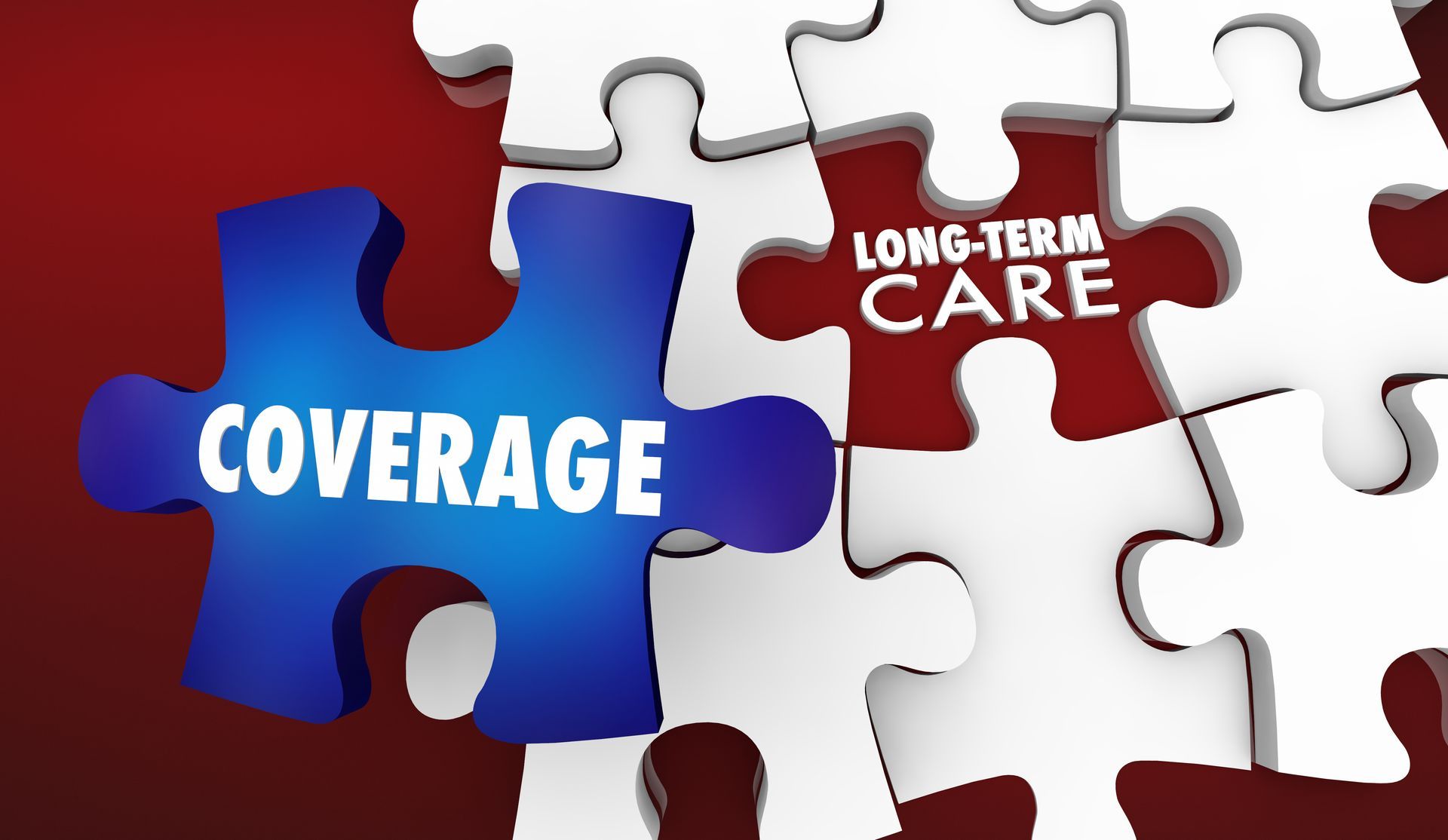
Acquiring long-term care insurance may seem unnecessary for young adults, but it can truly be a valuable consideration. Here's why: Lower Premiums : When you're young and in good health, premiums are considerably lower. Locking in these rates now shields you from potential future increases, which can be substantial. Guaranteed Coverage : Obtaining coverage while in good health protects you from the risk of developing a chronic illness or disability that could hinder your ability to secure coverage in the future. Planning for the Future : Accidents or illness can result in long-term care needs at any age. Having a plan in place ensures you have the necessary resources without burdening your loved ones financially. Preserving Assets : The cost of long-term care can easily exceed $100,000 per year. Investing in insurance provides coverage for these expenses, preserving your assets and securing your financial stability in retirement. Protecting Your Family : Having insurance relieves your loved ones of the emotional and financial burden of caring for you, allowing them to focus on supporting you. Peace of Mind : Knowing you have a long-term care plan gives you peace of mind, as you have prepared for the future and safeguarded your family. While it may seem far-fetched to consider long-term care as a young adult, the truth is that many Americans will eventually require such services. With life expectancy on the rise, the potential duration of care needs also increases. By investing in long-term care insurance early on, you can ensure your financial future and have the means to maintain your independence and well-being. Remember, there is no definite age limit for purchasing long-term care insurance, but securing it while young offers significant advantages in terms of cost and guaranteed coverage. If you would like to see if Long Term Care Insurance is an affordable options for you, give us a call !
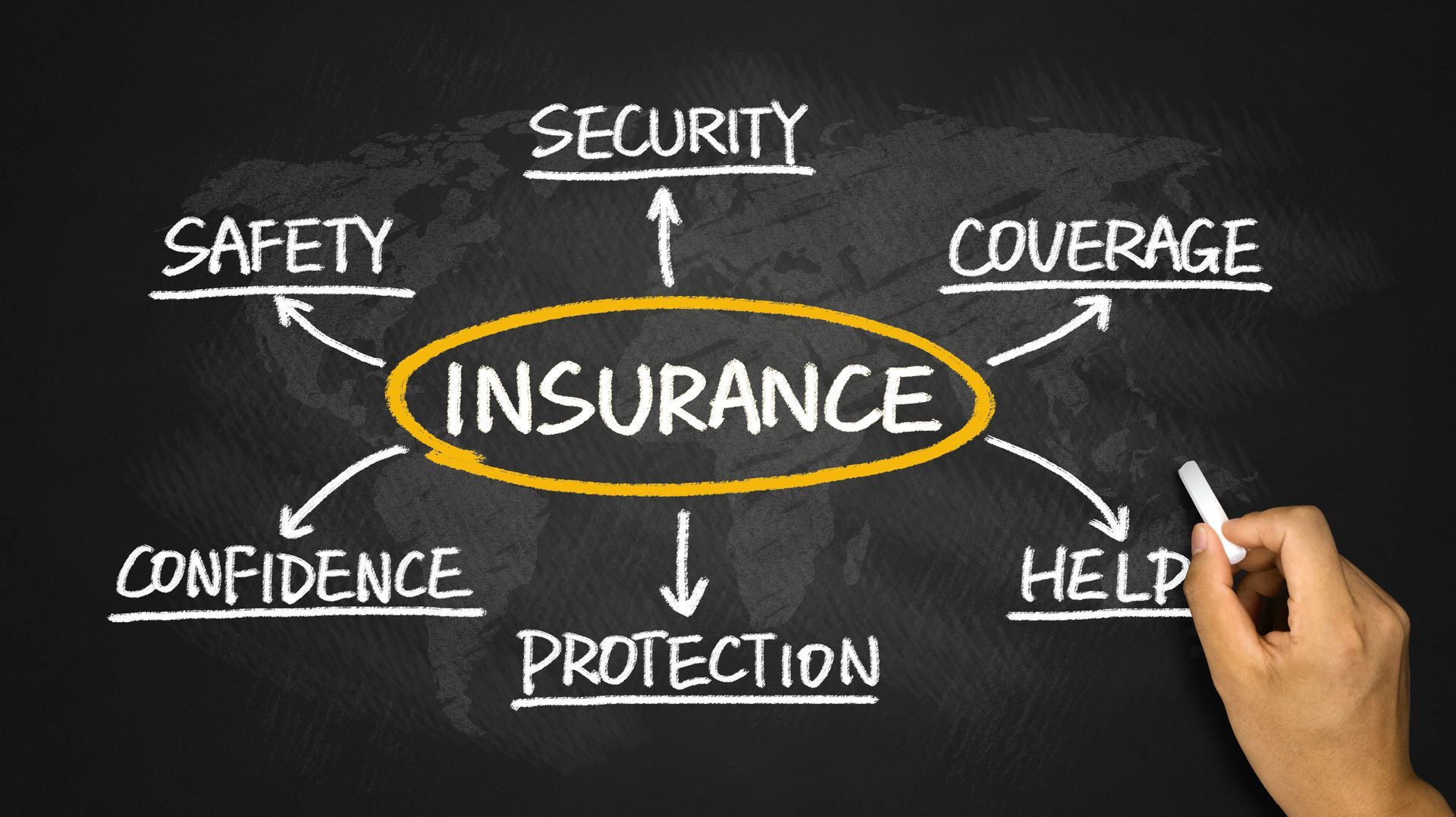
Financial planning and life insurance are crucial for achieving financial security and building generational wealth. Understanding your personal and financial needs is essential before making any financial decisions. There are various reasons for getting life insurance, including debt coverage, family protection, final expenses, investment purposes, and business purposes. Discussing your and your family's goals will guide you in choosing the right life insurance policy. There are two main types of life insurance: term life insurance and permanent life insurance. Term life insurance provides coverage for a specified period, while permanent life insurance offers lifelong coverage and potential cash value accumulation. You can employ various hacks to maximize the value of your insurance, such as choosing term life insurance to save money, leveraging permanent life insurance for potential cash value, combining term and permanent policies for balanced coverage, and staggering multiple term policies to match different life stages. Regularly reviewing and updating your life insurance policies is crucial to ensure they align with your evolving needs. You can adjust policies based on life changes, reduce premiums by improving your health, and secure a policy while young to lock in lower rates. Adding riders, such as disability waiver of premium and accelerated death benefit riders, can enhance your policy's coverage. Working with an independent agent can provide a broader range of options and potentially better rates. Additionally, you can use group life insurance as supplementary coverage and maximize the cash value component of permanent life insurance through strategic planning. By implementing these hacks, you can optimize your life insurance coverage and better protect your family's financial future. If you are wondering how Life Insurance can go to work for you, give us a call !

The thrill of exploring new destinations, immersing in foreign cultures, and creating unforgettable memories abroad - traveling is a dream shared by many. But, what happens when the unexpected strikes, and you find yourself in a foreign hospital, facing a medical emergency? The excitement of travel quickly turns to anxiety and uncertainty. While many of us assume that our Medicare coverage will extend beyond our borders, the harsh reality is that it often doesn't. In fact, Medicare typically only covers medical expenses incurred within the United States, leaving travelers vulnerable to high out-of-pocket costs. This is where travel insurance comes in, but beware - not all policies are created equal. In this revealing post, we'll uncover the surprising truth about travel insurance, debunk common myths, and provide expert insights on how to protect yourself and your wallet while traveling abroad. What does Medicare cover outside the US? Venturing beyond the borders of the United States can be a thrilling experience, but it's essential to understand the limitations of Medicare coverage when you're abroad. While Medicare is a lifeline for many Americans, its reach is predominantly confined to the homeland. In most cases, Medicare does not cover healthcare services or supplies received outside the United States, except in a few rare circumstances. For instance, if you're traveling through Canada between Alaska and another state, and a medical emergency arises, Medicare might cover the services received in Canada. Similarly, if you're on a ship within the territorial waters adjoining the United States, Medicare might provide coverage. However, these exceptions are few and far between. In general, Medicare beneficiaries should not rely on their coverage to protect them from unexpected medical expenses while traveling abroad. This is where travel insurance comes into play, offering a vital safety net for those venturing into unfamiliar territories. The Importance of Understanding Policy Limitations When it comes to Medicare abroad, understanding policy limitations is crucial to avoiding costly surprises. While it's easy to get caught up in the excitement of planning a trip, it's essential to take a closer look at the fine print of your travel insurance policy. What may seem like a comprehensive plan at first glance can quickly turn into a financial nightmare if you're not aware of the limitations. For instance, did you know that many policies won't cover pre-existing medical conditions, or that some may have age restrictions or exclusions for certain medical procedures? What about the fact that some policies may not provide coverage for medical evacuations or repatriations, leaving you to foot the bill for a potentially exorbitant medical transport? Without a thorough understanding of your policy's limitations, you may find yourself facing unexpected medical expenses, or worse, being stuck in a foreign country without adequate medical care. It's essential to carefully review your policy, asking questions like: What is the maximum coverage amount for medical expenses? Are there any exclusions or limitations for certain medical conditions or treatments? And what is the process for filing a claim or seeking reimbursement? Travel Insurance Options for Medicare Recipients When it comes to navigating the complex world of travel insurance as a Medicare recipient, it's essential to have the right coverage to ensure your healthcare needs are met while abroad. After all, the last thing you want to worry about on your dream vacation is a medical emergency. To help you make an informed decision, we've compiled a list of top travel insurance options that cater specifically to Medicare recipients. From comprehensive plans that cover pre-existing conditions to affordable options that provide emergency medical evacuation, we've got you covered. As you prepare to embark on your next adventure, remember that Medicare abroad may not be as reliable as you think. But with the right travel insurance, you can travel with confidence, knowing that you're protected from unexpected medical expenses. By understanding the surprising truth about Medicare abroad, you can take the necessary steps to ensure your health and financial well-being while exploring the world. Happy travels, and don't let medical bills ruin your vacation!
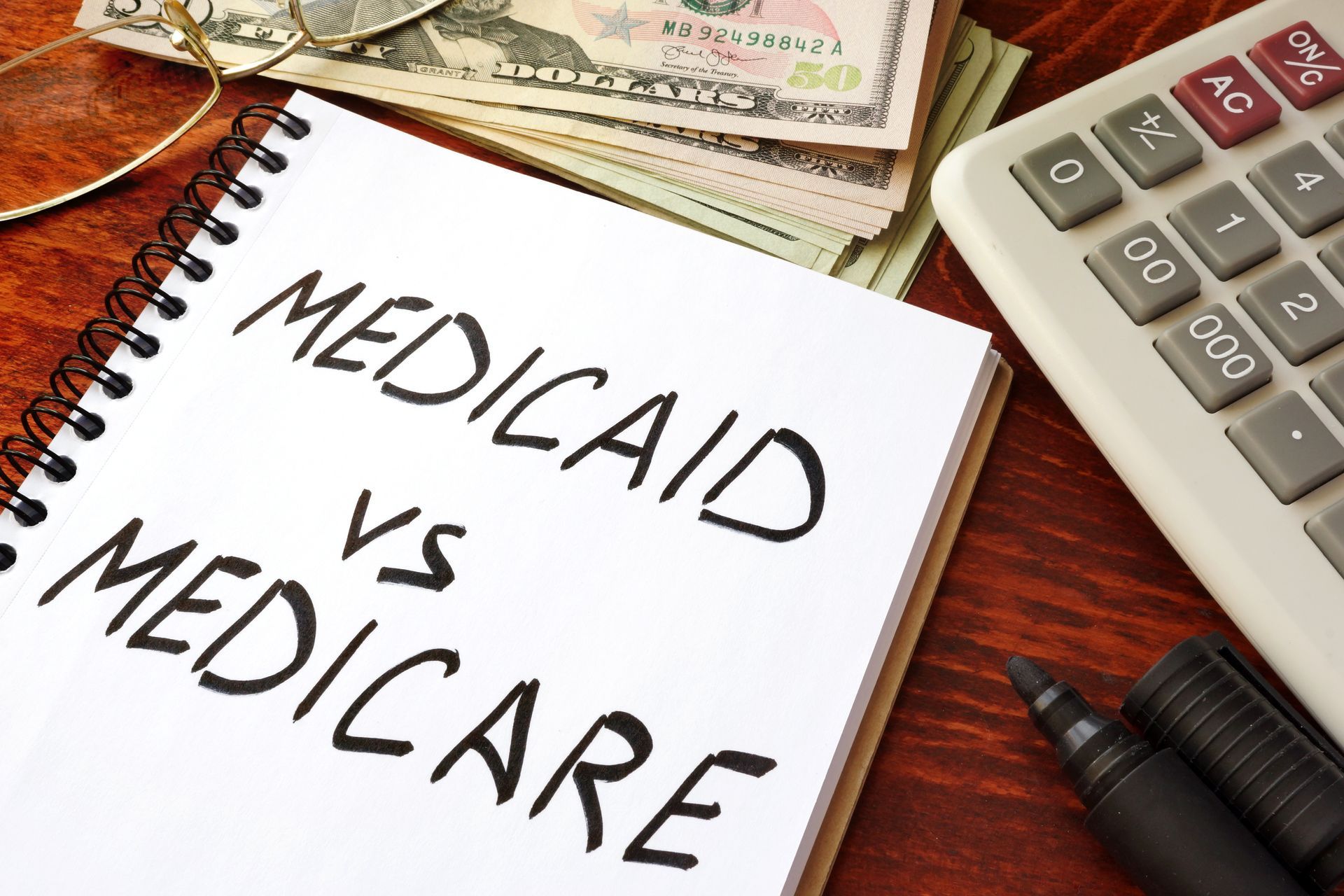
Understanding the Basics The world of government-funded healthcare programs can be a complex and overwhelming landscape, especially for those who are new to the system. Two of the most well-known programs, Medicare and Medicaid, are often confused with one another, leading to frustration and uncertainty for those trying to navigate their options. But fear not! In this article, we'll delve into the fundamental differences between these two vital programs, dispelling the myths and misconceptions that have led to so much confusion. At its core, the distinction between Medicare and Medicaid boils down to who is eligible, what benefits are provided, and how the programs are funded. While both programs are designed to provide essential healthcare services to those in need, they cater to different segments of the population. Medicare, for instance, is primarily geared towards seniors and individuals with disabilities, offering a range of benefits that include hospital stays, doctor visits, and prescription medication. On the other hand, Medicaid is a joint federal-state program that provides coverage to low-income individuals and families, including children, pregnant women, and people with disabilities. By grasping the basics of each program, individuals can make informed decisions about their healthcare options, ensuring they receive the care they need without breaking the bank. What is Medicare? Medicare, often mistakenly confused with Medicaid, is a federal health insurance program designed to provide coverage to a specific segment of the population. Established in 1965 as part of President Lyndon B. Johnson's Great Society program, Medicare is primarily intended for individuals 65 years or older, certain younger people with disabilities, and those with End-Stage Renal Disease (ESRD) - permanent kidney failure requiring dialysis or a transplant. This program is administered by the Centers for Medicare and Medicaid Services (CMS), a division of the U.S. Department of Health and Human Services. Medicare is divided into four parts: Part A (Hospital Insurance), Part B (Medical Insurance), Part C (Medicare Advantage), and Part D (Prescription Drug Coverage). Medicare Part A and Part B are often referred to as "Original Medicare." These two parts provide coverage for inpatient hospital care, skilled nursing facility care, home health care, hospice care, and outpatient medical services. Medicare Part C, also known as Medicare Advantage, offers an alternative to Original Medicare, providing additional benefits and often lower out-of-pocket costs. Lastly, Medicare Part D provides prescription drug coverage. Unlike Medicaid, which is a joint federal-state program, Medicare is a federally administered program, with eligibility and benefits standardized across the country. Understanding the nuances of Medicare is essential for those approaching retirement age or living with a disability, as it can significantly impact their healthcare options and financial security. What is Medicaid? Medicaid, often misunderstood as a carbon copy of Medicare, is actually a distinct government program designed to provide essential healthcare coverage to low-income individuals and families. Born out of the Social Security Act of 1965, Medicaid is a joint federal-state program that aims to bridge the healthcare gap for vulnerable populations, including children, pregnant women, elderly individuals, and people with disabilities. In stark contrast to Medicare, which is primarily focused on seniors and people with disabilities, Medicaid's eligibility criteria are centered around income levels, with beneficiaries typically falling below a certain percentage of the federal poverty level. This means that Medicaid serves as a vital safety net for those who cannot afford private health insurance, providing access to essential medical services, including doctor visits, hospital stays, and prescription medications. Through Medicaid, states have the flexibility to design and implement their own programs, allowing for varying degrees of coverage and benefits. While the program is largely funded by the federal government, states are responsible for administering Medicaid and setting their own eligibility requirements, which can result in differing levels of coverage from one state to another. Despite these variations, Medicaid remains a critical component of the US healthcare system, providing a lifeline to millions of Americans who would otherwise be unable to afford essential medical care. Medicare vs Medicaid: A Side-by-Side Comparison Now that we've delved into the basics of each program, it's time to put them head-to-head in a side-by-side comparison. This will help you visualize the key differences between Medicare and Medicaid, making it easier to determine which program is right for you or your loved one. **Eligibility** Medicare : Available to individuals 65 and older, certain younger people with disabilities, and people with End-Stage Renal Disease (ESRD). Medicaid : Available to low-income individuals and families, including children, pregnant women, and people with disabilities. **Coverage** Medicare : Covers hospital stays, doctor visits, prescription medications, and other medical services, with optional coverage for dental, vision, and hearing services. Medicaid : Covers a wide range of services, including doctor visits, hospital stays, prescription medications, and long-term care, with varying levels of coverage depending on the state. **Cost** Medicare : Premiums, deductibles, and copays apply, with some costs varying depending on the specific plan chosen. Medicaid : Generally, no premiums or copays are required, although some states may charge small fees. **Administration** Medicare : Administered by the federal government, with private insurance companies offering Medicare Advantage plans. Medicaid : Administered by each state, with varying levels of federal funding and support. By examining these key differences, you can see that Medicare and Medicaid serve distinct purposes and cater to different populations. Understanding these differences is crucial in navigating the complex world of healthcare and ensuring you receive the coverage you need. Common Misconceptions About Medicare and Medicaid One of the primary reasons why Medicare and Medicaid are often confused with each other is due to the prevalence of misconceptions surrounding these two programs. For many, the lines between Medicare and Medicaid are blurred, leading to a lack of understanding about what each program offers and who is eligible. One common misconception is that Medicare is only for low-income individuals, when in fact, it's a federal health insurance program for people 65 and older, certain younger people with disabilities, and people with End-Stage Renal Disease (permanent kidney failure requiring dialysis or a transplant). On the other hand, Medicaid is a joint federal and state program that provides health coverage to low-income individuals and families. Another misconception is that Medicare and Medicaid are the same as other government assistance programs, such as Social Security or food stamps. While these programs are all government-funded, they serve distinct purposes and have different eligibility requirements. Additionally, some people believe that Medicare and Medicaid are only for people who are unable to afford health insurance. However, this is not the case. Medicare is available to anyone who meets the eligibility criteria, regardless of their income level. Medicaid, on the other hand, is designed for low-income individuals and families who cannot afford health insurance. By understanding and debunking these common misconceptions, you can make informed decisions about your healthcare and ensure that you're getting the coverage you need. In conclusion, navigating the complex world of government-funded healthcare programs can be a daunting task, but it's crucial to understand the differences between Medicare and Medicaid to ensure you or your loved ones receive the necessary care. By dispelling the common misconceptions and myths surrounding these two programs, we hope this article has empowered you to make informed decisions about your healthcare options. With this newfound knowledge, you can confidently navigate the system, secure the benefits you deserve, and focus on what matters most - your health and well-being.

As we get older, our financial needs and goals change. We may be living on a fixed income, dealing with healthcare expenses, and planning for our retirement. It's important to ensure that our financial wellness is in good shape during our golden years. Budgeting and saving become crucial in achieving this. In this blog post, we'll be discussing some practical tips for Senior financial wellness that will help you manage your money, save more, and make the most of your budget. From cutting down on expenses and creating a retirement plan to maximizing social security benefits and investing wisely, we'll cover all the bases to ensure you enjoy financial security and peace of mind during your golden years. Understanding the Financial Challenges Faced by Seniors As Seniors enter their golden years, they often encounter a unique set of financial challenges that can significantly impact their financial wellness. Understanding these challenges is crucial in developing effective strategies to navigate them successfully. One common financial challenge faced by Seniors is managing a fixed income. Many retirees rely on pensions, social security, and savings as their primary sources of income, which may not always keep pace with rising costs of living. This can lead to budget constraints and potential financial strain. Healthcare expenses also pose a significant challenge for Seniors. As individuals age, they may require more frequent medical care, medications, and long-term care services. The costs associated with healthcare can quickly add up and deplete retirement savings if not adequately planned for. Furthermore, Seniors may face decisions related to estate planning, inheritance, and end-of-life expenses. It is essential for seniors to address these matters proactively to ensure their financial affairs are in order and their wishes are carried out as intended. Importance of Budgeting in Retirement Budgeting is a crucial aspect of financial planning, especially during retirement. As individuals transition into their golden years, having a well-thought-out budget can make a significant impact on their financial wellness and overall quality of life. Retirement brings about changes in income sources, expenses, and lifestyle, making it essential to establish a budget that aligns with these new circumstances. A well-crafted budget can help seniors track their expenses, manage their income streams effectively, and ensure that they are living within their means. By outlining their regular expenses such as housing, healthcare, utilities, and leisure activities, retirees can gain a clear understanding of where their money is going and identify areas where they can potentially cut back or optimize spending. Moreover, budgeting in retirement allows seniors to plan for unexpected expenses, such as medical emergencies or home repairs, without jeopardizing their financial stability. It provides a sense of financial security and peace of mind, knowing that there is a structured financial plan in place to support their needs and aspirations during this stage of life. Strategies for Saving Money in Retirement Saving money in retirement is crucial for maintaining financial stability and security during your golden years. Here are some effective strategies to help seniors boost their savings: 1. **Downsize* *: Consider downsizing your living arrangements to a smaller, more affordable home. This can help reduce housing expenses, property taxes, and maintenance costs, freeing up more money for savings. 2. **Cut Unnecessary Expenses** : Review your monthly expenses and identify areas where you can cut back. Cancel unused subscriptions, negotiate lower rates on bills, and avoid unnecessary purchases to save more money. 3. **Take Advantage of Senior Discounts** : Many businesses offer discounts for seniors on a wide range of products and services. Take advantage of these discounts to save money on everyday expenses. 4. **Maximize Retirement Account Contributions** : If you have a retirement account, such as a 401(k) or IRA, try to maximize your contributions to take advantage of tax benefits and employer matching contributions. This can help accelerate your savings growth. 5. **Invest Wisely** : Consider working with a financial advisor to develop an investment strategy that aligns with your financial goals and risk tolerance. Diversifying your investments can help protect your savings and potentially generate higher returns. Exploring Investment Options for Seniors As Seniors enter their golden years, exploring investment options becomes crucial for securing financial stability and peace of mind in retirement. While traditional saving methods such as savings accounts and CDs are still viable, exploring other investment avenues can potentially yield higher returns. One popular investment option for Seniors is dividend-paying stocks. These stocks provide a regular income stream in the form of dividends, which can supplement retirement income. Additionally, dividend-paying stocks have the potential for capital appreciation, providing a dual benefit for investors. Another investment avenue to consider is bonds, particularly municipal bonds. Municipal bonds are issued by state and local governments and offer tax advantages for investors. They provide a predictable income stream and are generally considered lower risk compared to stocks. Real estate investment can also be a viable option for seniors looking to diversify their portfolio. Investing in rental properties or real estate investment trusts (REITs) can provide a steady income stream and the potential for capital appreciation over time. Lastly, exploring retirement accounts such as IRAs and 401(k)s is essential for maximizing retirement savings. Seniors should review their investment allocations and consider reallocating their assets to align with their risk tolerance and financial goals. By implementing the budgeting and saving tips discussed in this blog post, you are setting yourself up for a secure and comfortable financial future. Remember, it's never too late to start saving and making smart financial decisions. Whether it's creating a detailed budget, exploring additional sources of income, or seeking professional financial advice, taking control of your finances can bring peace of mind and freedom in your retirement years. Financial wellness is not just about numbers; it's about achieving a sense of security and stability in your life. By being proactive and mindful of your financial goals, you can enjoy your golden years to the fullest, knowing that you have taken the necessary steps to secure your financial future. Here's to a golden future ahead filled with financial wellness and peace of mind. If you have questions about your retirement savings and would like to schedule a time to discuss your options, give us a call !

Retirement can be a daunting prospect for many people. After years of working, it can be difficult to adjust to a new way of life. However, retirement is not the end of the road. In fact, it can be a new beginning, a chance to embrace change and enjoy life on your own terms. In this post, we’ll explore how to thrive in retirement and beyond by embracing change. From cultivating new hobbies and interests to staying active and engaged, we’ll provide you with a guide to help you navigate this exciting new chapter in your life. So, if you’re ready to start living your best life, read on to learn how to embrace change and thrive in retirement and beyond. The Transition to Retirement: Challenges and Opportunities Transitioning to retirement can be both exciting and daunting, as it marks a significant shift in one's lifestyle and daily routine. While the prospect of newfound freedom and leisure time is invigorating, it can also bring about challenges that require adaptation and resilience. One common challenge is adjusting to a new sense of purpose and identity outside of a traditional career. For many individuals, work has been a central aspect of their lives for decades, providing structure, social connections, and a sense of accomplishment. Upon retirement, there may be a void that needs to be filled with meaningful activities and pursuits. Moreover, the financial implications of retirement can be a source of stress for some individuals. Transitioning from a steady income to relying on savings and pensions requires careful financial planning and budgeting to ensure a comfortable and secure retirement. Despite these challenges, the transition to retirement also presents a myriad of opportunities for personal growth, exploration, and fulfillment. Retirees have the freedom to pursue long-held passions, travel to new destinations, engage in hobbies, volunteer, or even start a new career or business venture. Setting New Goals and Aspirations for This Life Stage Retirement marks a significant transition in life, offering a unique opportunity to set new goals and aspirations. It's a time to reflect on past achievements and experiences while looking forward to what lies ahead. Setting new goals can provide a sense of purpose, direction, and fulfillment during this life stage. One approach to setting new goals in retirement is to focus on personal growth and self-improvement. This could involve learning new skills, pursuing hobbies or interests that were previously put on hold, or even embarking on a new career path. Many retirees find fulfillment in volunteering or giving back to their communities, which can be a rewarding way to stay engaged and make a positive impact. Setting financial goals is also essential in retirement planning. Whether it's creating a budget, managing investments, or planning for future expenses, having clear financial objectives can help ensure a secure and comfortable retirement. Additionally, setting health and wellness goals, such as maintaining an active lifestyle, eating well, and prioritizing self-care, can contribute to overall well-being and quality of life in retirement. Exploring New Hobbies and Interests Retirement opens up a world of possibilities, allowing you the time and freedom to explore new hobbies and interests that you may never have had the chance to pursue before. Whether it's painting, gardening, photography, cooking, or even skydiving, now is the perfect time to dive into activities that bring you joy and fulfillment. Exploring new hobbies not only keeps your mind engaged and active but also provides a sense of purpose and excitement in this new chapter of your life. It's a wonderful opportunity to discover hidden talents, meet like-minded individuals, and reignite your passion for learning and trying new things. From joining local clubs and classes to embarking on solo adventures, the possibilities are endless when it comes to exploring new hobbies in retirement. Embrace this time as a chance to indulge in activities that bring you happiness and enrich your life in ways you never thought possible. Staying Physically and Mentally Active Staying physically and mentally active is crucial for thriving in retirement and beyond. As we age, it's more important than ever to prioritize our health and well-being. Engaging in regular physical activity, whether it's through daily walks, yoga, swimming, or gardening, can help maintain strength, flexibility, and overall vitality. In addition to physical exercise, keeping your mind sharp is equally essential. Stimulate your brain by challenging yourself with puzzles, games, reading, or learning new skills. Consider taking up a new hobby or enrolling in classes to keep your mind engaged and active. Furthermore, social interactions play a significant role in maintaining mental and emotional well-being. Stay connected with friends, family, and community groups to combat feelings of isolation and loneliness. Engaging in social activities can boost your mood, provide a sense of belonging, and enhance overall quality of life. We hope this guide on embracing change and thriving in retirement and beyond has provided you with valuable insights and useful strategies. Retirement is a significant life transition, and it's essential to approach it with a positive mindset and a willingness to adapt to change. By following the advice and tips outlined in this blog post, you can navigate this new chapter in your life with confidence and excitement. Remember, change is inevitable, but with the right mindset and strategies, you can embrace it and create an enriching and fulfilling retirement experience.
